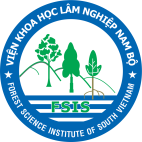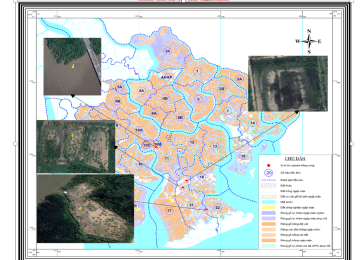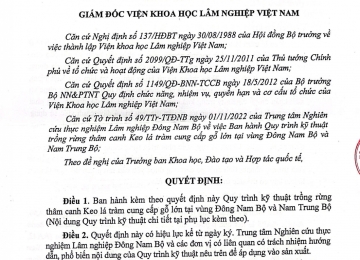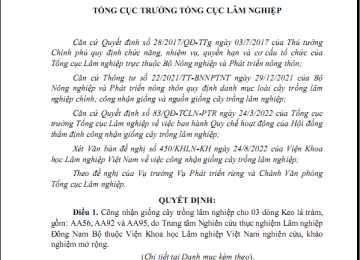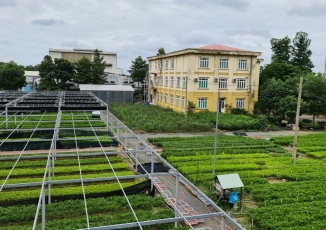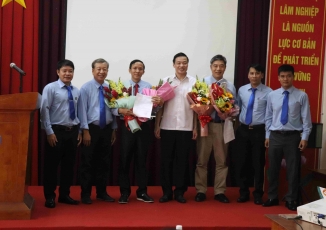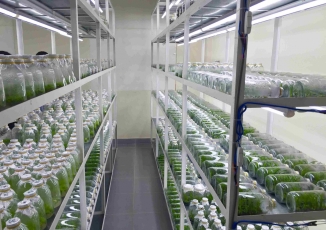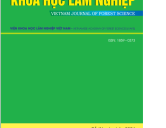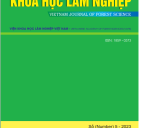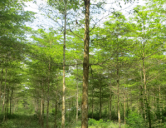Ấn phẩm khoa học
PHẢN ỨNG CỦA MỘT SỐ LOÀI CÂY NGẬP MẶN VỚI YẾU TỐ MÔI TRƯỜNG KHU VỰC VEN BIỂN CẦN GIỜ, TP HỒ CHÍ MINH
Quyết định 426/QĐ-KHLN-KH Ban hành Quy trình kỹ thuật trồng rừng thâm canh Keo lá tràm cung cấp gỗ lớn tại vùng Đông Nam Bộ và Nam Trung Bộ
Improving productivity and sustainability of successive rotations of Acacia auriculiformis plantations in South Vietnam
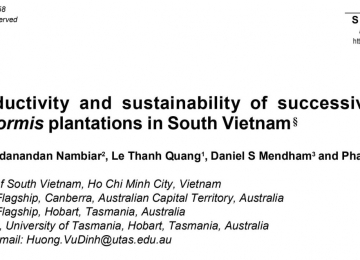
We studied the productivity of Acacia auriculiformis plantations in South Vietnam over three successive rotations covering 15 years. The focus of our study was on the effects of inter-rotation management on stand growth and soil properties. Contrastin g slash and litter management treatments were applied at the start of the sec ond rotation, and reapplied at the start of the third rotation with an additional phosphorus fertiliser treatment. There were improvements in the genetics of planting stock, weed control and stocking with each rotation. Average growth rates (mean annual increment) increased from 10.6 m3 ha−1 y−1 in the first rotation (age 7 years) to 28.3 m3 ha−1 y−1 in the second rotation (age 6 years) and to 33.9 m3 ha−1 y−1 at age 5 years in the third rotation. Removal of slash and litter after harvesting the first rotation removed 20.2 Mg ha−1 biomass, containing 169.6, 13.9, 76.3 and 25.1 kg ha−1 of nitrogen (N), phosphorus (P), potassium and calcium, respectively, from the site. Greater amounts were removed after the second rotation commensurate with higher amounts of biomass produced. Slash and litter removal reduced growth of the second rotation by 13% compared to their retention. Soil organic carbon (C) in the 0–10 cm soil layer increased from 16.7 g kg−1 at the end of the first rotation to 22.8 g kg−1 at the end of the second rotation with a corresponding increase in soil N from 1.2 g kg−1 to 1.7 g kg−1. Over the same time, soil organic C and N contents were 26% and 40% greater, respectively, in treatments with slash and litter retained compared to initial levels before treatment application. In the second rotation, extractable soil P declined and in the third rotation there was a response to added P. Overall results demonstrate that there is an opportunity to increase and sustain production of A. auriculiformis over at least three rotations by integrated management practices promoting better stocking, planting of genetically improved stock, organic matter and nutrient conservation, and judicious weed management.
Growth and physiological responses to intensity and timing of thinning in short rotation tropical Acacia hybrid plantations in South Vietnam
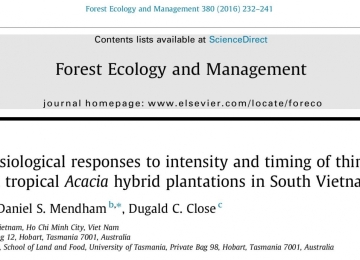
Acacia hybrid plantations are widely planted for pulpwood in Vietnam, but have the potential to be managed for high value saw-logs. This study examined the growth and physiological responses to thinning as a management option to increase the sawlog yield and value. Treatments were: unthinned (planting density 1111 trees ha−1), thinned to 833 or 600 trees ha−1 in a single thinning at either age 2 (early) or 3 (late) years, and progressively thinned from 1111 to 833 trees ha−1 at age 2 years, and then to 600 trees ha−1 at age 3 years. Three years after early thinning to 600 stems ha−1, mean stem diameter was increased by 16.7% and the stand volume was reduced by 15.8%; thinning to 833 stems ha−1 resulted in no significant loss in stand volume and increased mean diameter by 7.5%. The leaf area index, LAI of stands thinned to 600 stems ha−1 recovered rapidly and there was no significant difference between unthinned and thinned treatments 1 year after thinning; this recovery was also associated with a reduction in litterfall. Thinning to 600 stems ha−1 increased A1500 of the lower crown by 23.5 and 17.4% at age 2 and 3 yr, respectively; and this was associated with increased foliar phosphorus concentration. Thinning reduced leaf water stress during the dry season; leaf water potential and tree growth were significantly influenced by season. It was concluded that thinning to 600 trees ha−1 at age 2 years or to 833 trees ha−1 at age 3 years will produce wood with the highest diameter.
VIDEO CLIPS
Liên kết
Ấn phẩm mới
Thống kê truy cập
Đang online: 5
Truy cập ngày: 12544
Tổng truy cập: 275225
